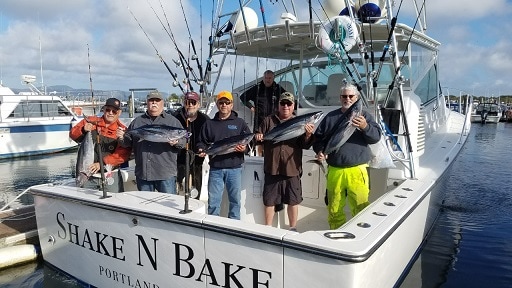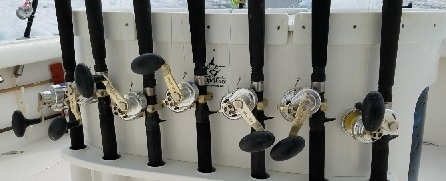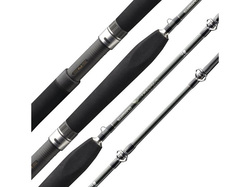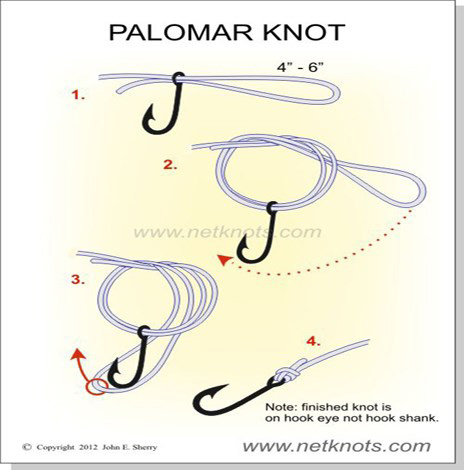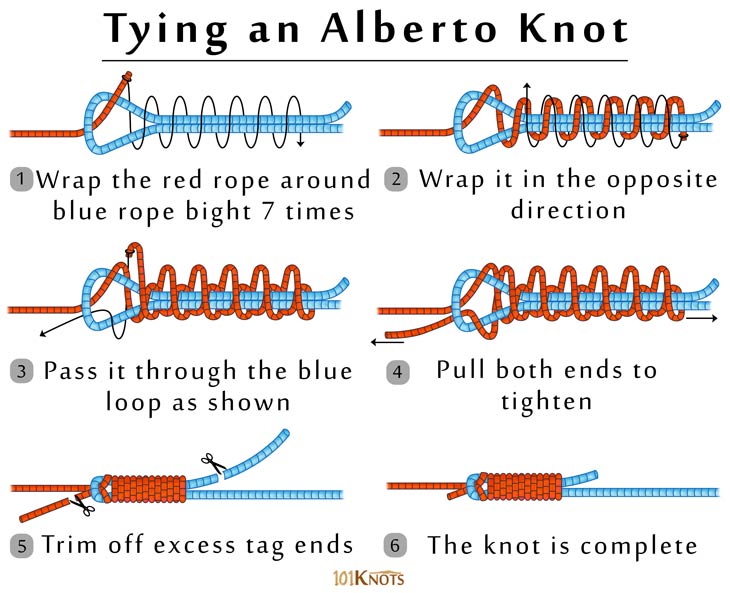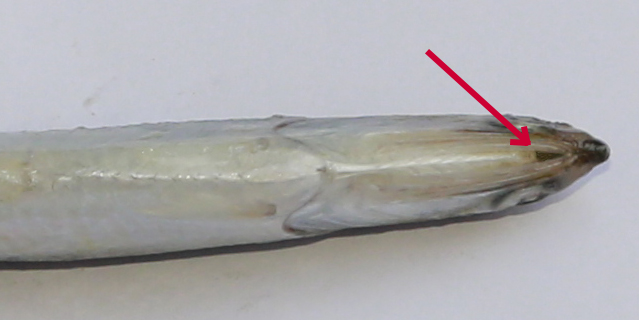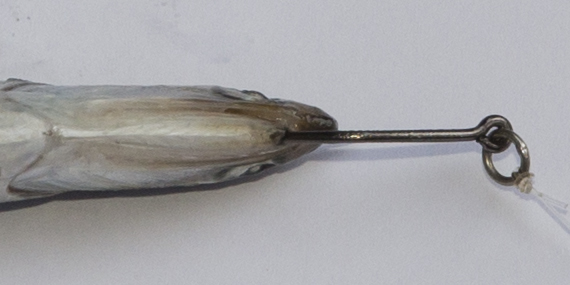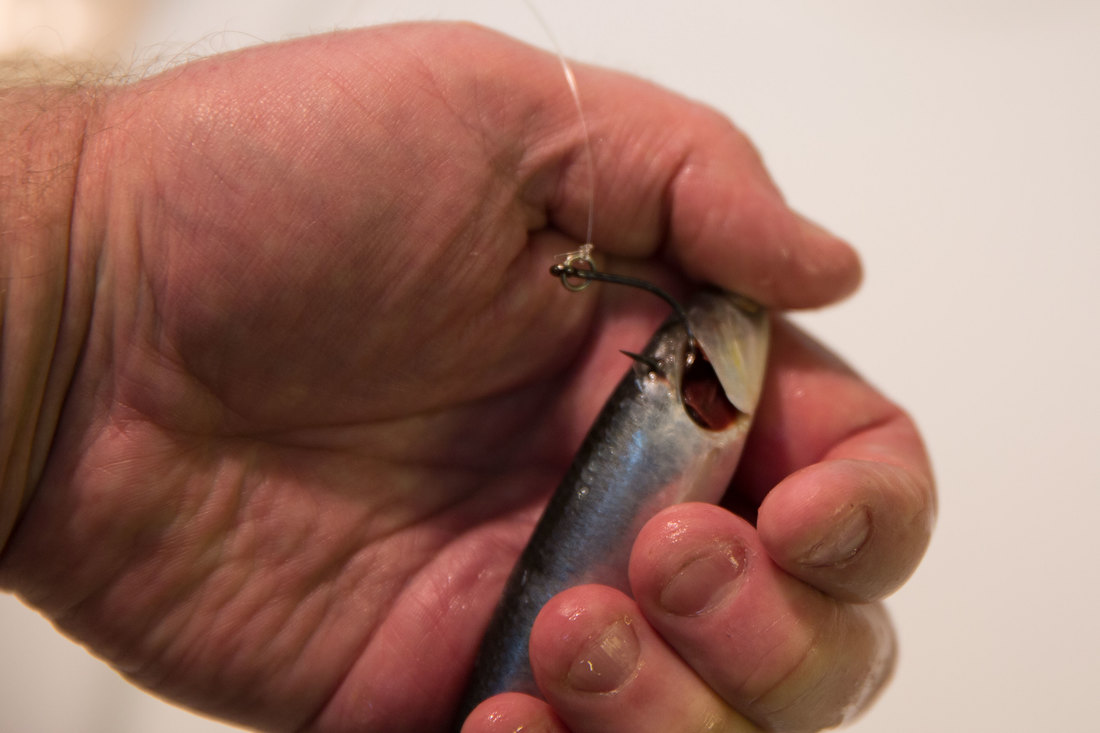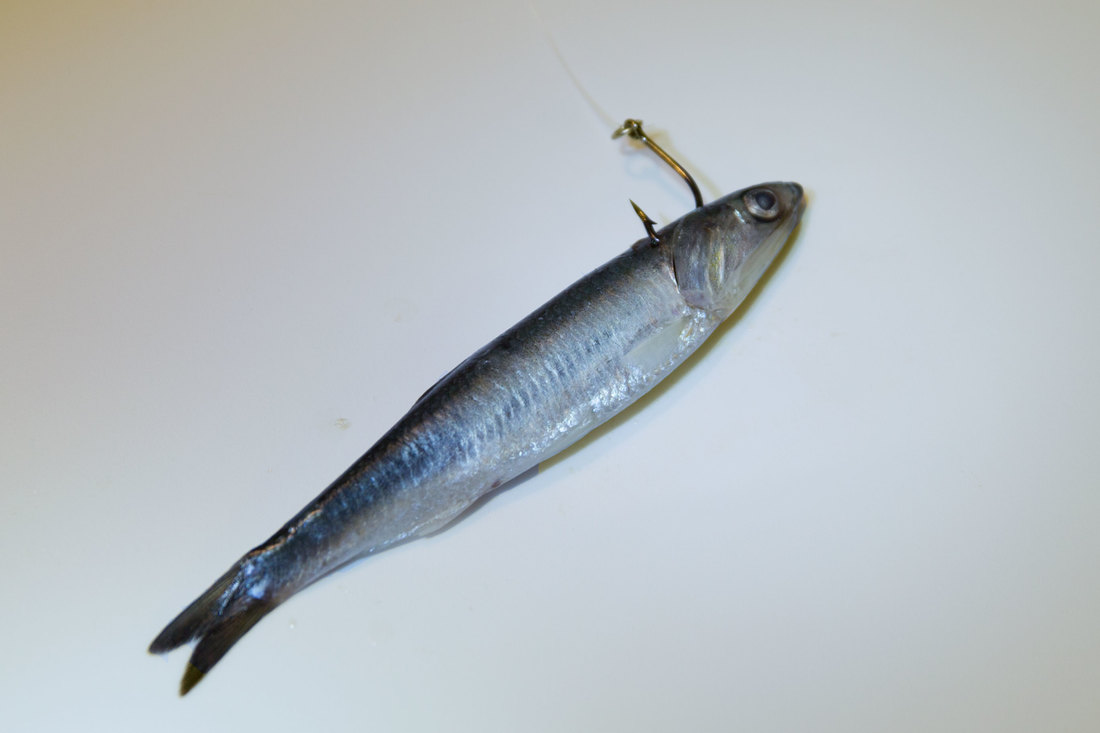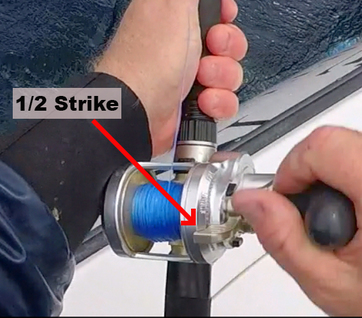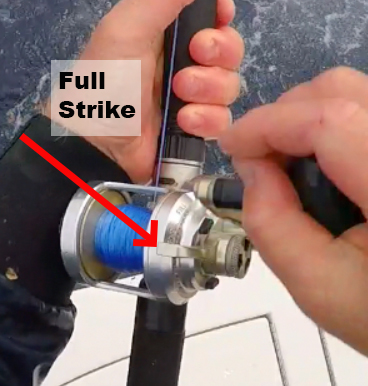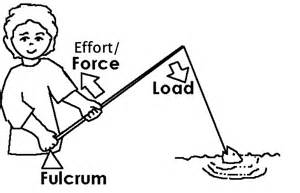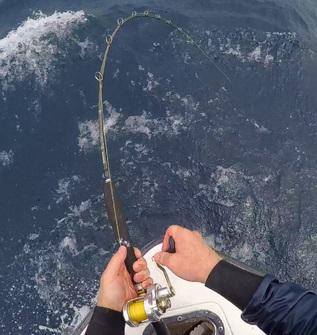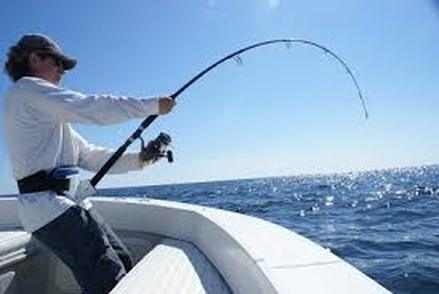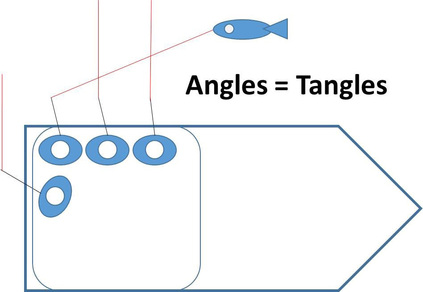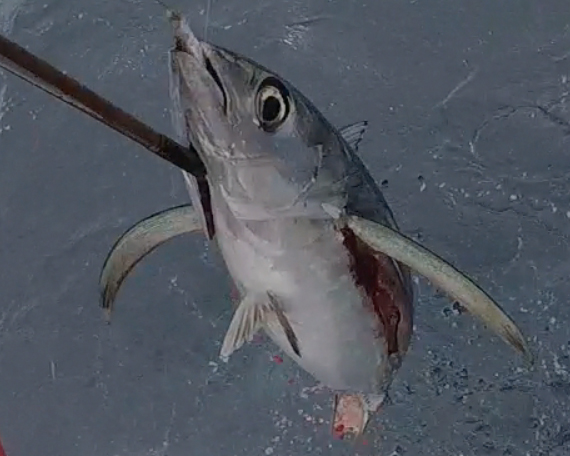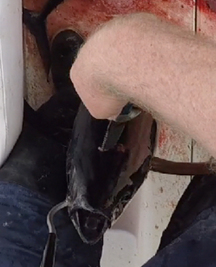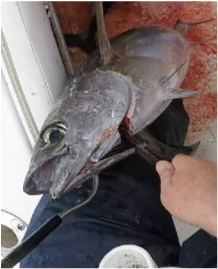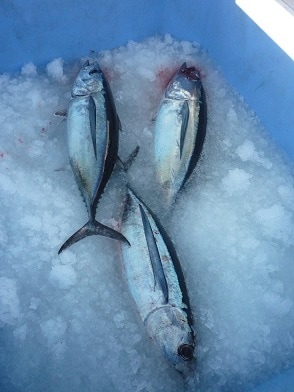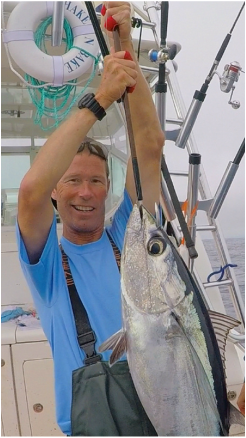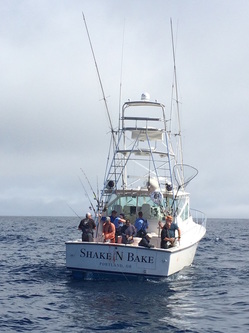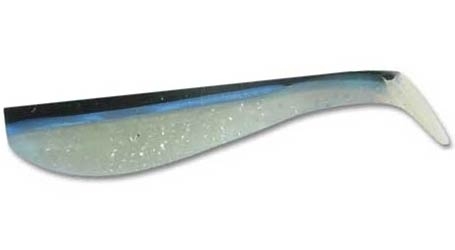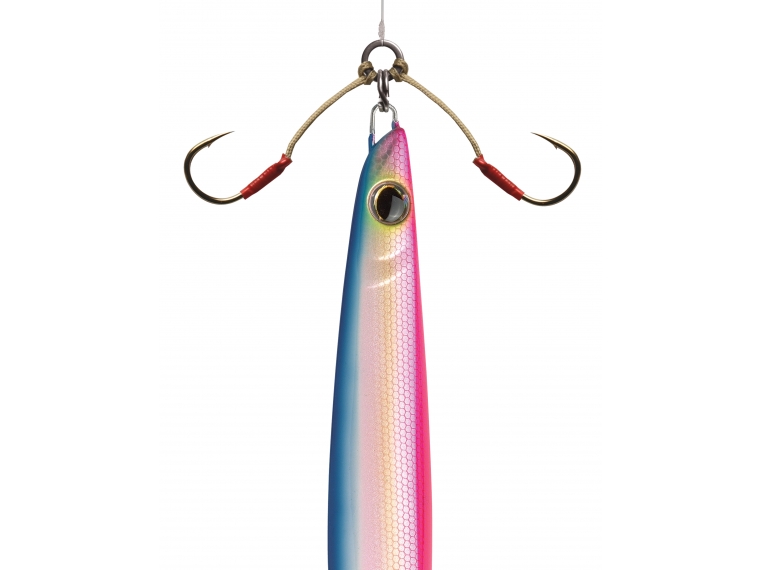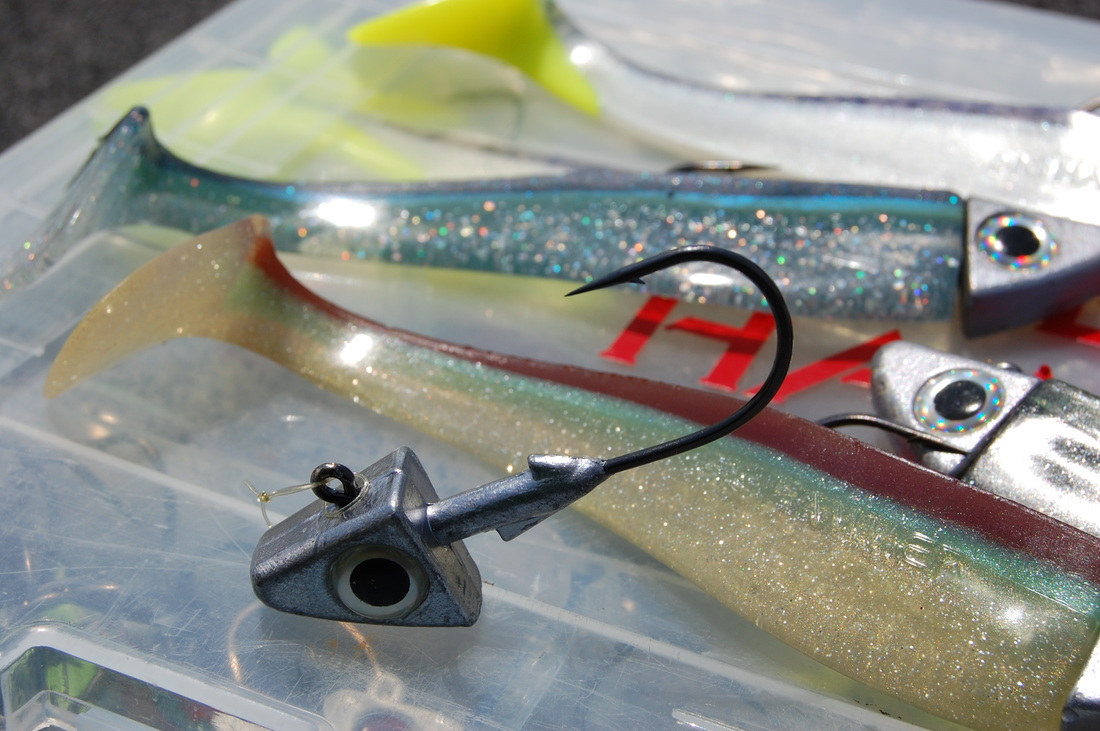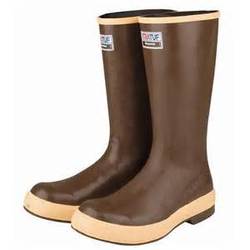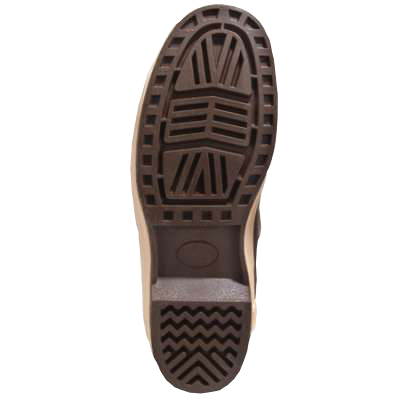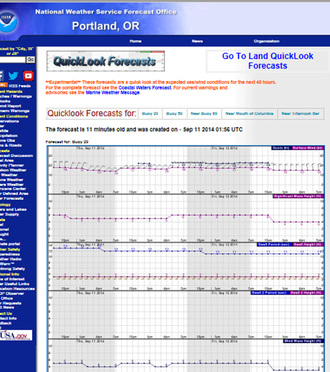LIVE BAIT ALBACORE FISHING
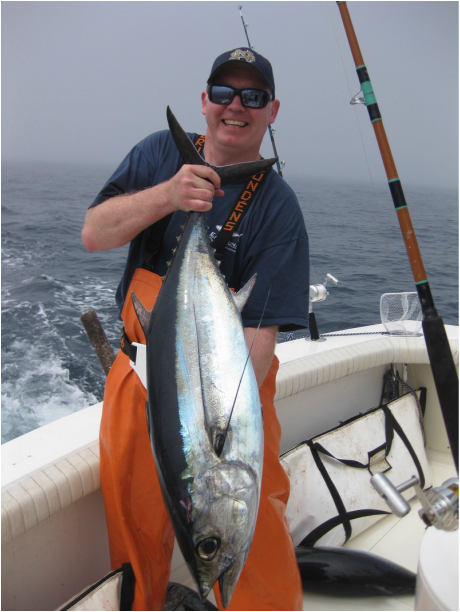
Live bait albacore tuna fishing is probably the most addictive fishing on the planet.
Once we locate a school of tuna either by sight or by hooking up on the troll, we try and get a bait stop going.
We immediately start "broadcasting" anchovies by the handful around the boat trying to bring the school of tuna up to the surface.
While we clear the troll rods, we will get your live bait rods baited up and ready to fish.
Live bait tuna fishing is VERY fast paced.
When the school of tuna is under the boat, every bait gets bit and every rod gets hooked up.
This is when having a huge cockpit and lots of rail comes in handy.
Live bait fishing requires you to follow your fish around the boat and over and under other anglers lines.
It is chaotic, exciting, and addictive.
On Shake N Bake, "the most important fish is the next one", meaning as soon as your fish is on the deck, get baited up and back in the water.
Albacore can go on or off the bite in seconds, The more fish we have on, the more tuna that come up to the boat to investigate.
The sooner you are back in the water the sooner you hook another fish.
We HIGHLY recommend you read the below, Albacore Tuna Live Bait Fishing 101 - The Team Shake N Bake Way, written by John Cooney. It tells you pretty much everything you need to know about live bait albacore fishing and will greatly increase your odds when things get fast and furious.
Once we locate a school of tuna either by sight or by hooking up on the troll, we try and get a bait stop going.
We immediately start "broadcasting" anchovies by the handful around the boat trying to bring the school of tuna up to the surface.
While we clear the troll rods, we will get your live bait rods baited up and ready to fish.
Live bait tuna fishing is VERY fast paced.
When the school of tuna is under the boat, every bait gets bit and every rod gets hooked up.
This is when having a huge cockpit and lots of rail comes in handy.
Live bait fishing requires you to follow your fish around the boat and over and under other anglers lines.
It is chaotic, exciting, and addictive.
On Shake N Bake, "the most important fish is the next one", meaning as soon as your fish is on the deck, get baited up and back in the water.
Albacore can go on or off the bite in seconds, The more fish we have on, the more tuna that come up to the boat to investigate.
The sooner you are back in the water the sooner you hook another fish.
We HIGHLY recommend you read the below, Albacore Tuna Live Bait Fishing 101 - The Team Shake N Bake Way, written by John Cooney. It tells you pretty much everything you need to know about live bait albacore fishing and will greatly increase your odds when things get fast and furious.
Albacore Tuna Live Bait Fishing 101
The Team Shake N Bake Way
Topics
|
Attention Shake N Bake Clients: Please just focus on the sections to the right that are highlighted in red. We will take care of the rest.
|
Gear
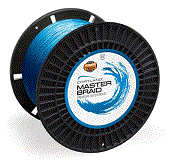
Mainline: Braided Spectra
200-300 yards of quality Braid. I use 80# not because I need the line strength but because the lighter the line weight the more likely the line will gouge and bind into itself on the reel. Some people prefer hi-vis (high visibility) braid. On the Shake N Bake we use multiple colors to make untangling easier. Everyone has their favorite brand of braid. On the Shake N Bake we use Cortland's Master Braid which comes in a variety of weights and colors. |
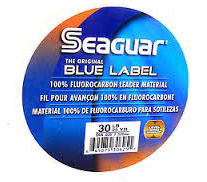
Leader: 20# to 40# Fluorocarbon leader
(30# is generally best) Tuna aren’t always but they can get leader shy. Flouro-carbon leader is considered to be invisible and works well. You need about 15-30 feet of leader. As you fish you will end up cutting down your leader because of swallowed hooks or sharks or break offs. Once you are down to less than 5 feet of leader it is time to tie on more leader. See Knots section. |
Knots
Leader to Hook: Palomar Knot
Leader to Braid: RP or Alberto Knot
There are several options, but I prefer the Alberto Knot also known as the RP (Royal Polaris) Knot. This knot is easier to tie on a moving boat than some of the other leader to braid knots and has proven to be a strong and consistent knot for us.
There are several options, but I prefer the Alberto Knot also known as the RP (Royal Polaris) Knot. This knot is easier to tie on a moving boat than some of the other leader to braid knots and has proven to be a strong and consistent knot for us.
The Conversion *
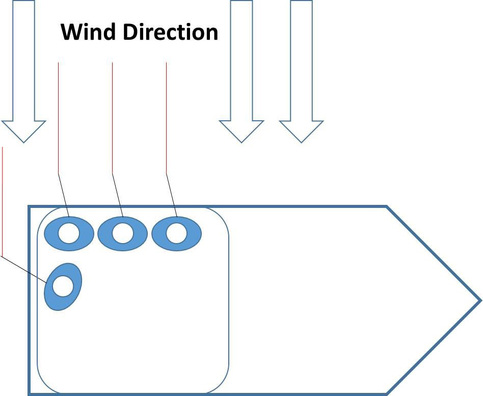
(From Troll to Bait Stop)
Like a NASCAR pit stop, a speedy conversion is critical. Most Live Bait Stops start with one or more fish hooked on the troll. Trolling cedar plugs, tuna clone lures, or Rapalas or a combination of the three is typically how tuna schools are located. Once a trolled rod goes off with a fish, the anglers need to work quickly. The captain should slow the boat to a stop. Some of the anglers should grab the trolled rod(s) and begin fighting the fish. All other rods must be cleared quickly by reeling in the lures and stowing them safely away. As all this is happening one angler must begin chumming live bait. This is accomplished by grabbing a scoop of 6-8 anchovies and tossing them into the prop wash as the boat slows to a stop. As anglers clear the rods, they must quickly grab live bait rods and begin baiting their hooks and fishing. All live bait fishermen must fish with the wind in their faces otherwise the boat will drift over their bait and create a real mess... Always remember “Wind in your face, you’re in the right place!” Not every troll caught fish will result in a successful bait stop, but the faster you are able to deploy bait after hooking a troll hooked fish the more likely you are to be successful in getting a bait stop going.
Once you hook a fish on live bait, you should continue to regularly chum more live bait. 2-5 anchovies tossed to the downwind side of the boat every 2-3 minutes is usually sufficient. Tossing them downwind ensures that the boat will drift over the chummed bait. Bait stops can last 5 minutes or several hours. Don’t take anything for granted. Fish hard while you have them at your boat. There will be time to have lunch, take pictures or have a beer later. Tuna can go down and you may never see another school the rest of the day. The most important fish is your next fish, not the one on the deck or the one you just lost. After the troll hooked fish has been landed and you have done ~10 minutes of live bait fishing without a bite, the school may have moved. Check your fish finder. The tuna may still be there, but they may have moved down to a deeper depth. If that is the case consider bringing them up with iron. See Complementary Fishing Techniques. If nothing is showing up on your fish finder then it is best to return to the troll.
Like a NASCAR pit stop, a speedy conversion is critical. Most Live Bait Stops start with one or more fish hooked on the troll. Trolling cedar plugs, tuna clone lures, or Rapalas or a combination of the three is typically how tuna schools are located. Once a trolled rod goes off with a fish, the anglers need to work quickly. The captain should slow the boat to a stop. Some of the anglers should grab the trolled rod(s) and begin fighting the fish. All other rods must be cleared quickly by reeling in the lures and stowing them safely away. As all this is happening one angler must begin chumming live bait. This is accomplished by grabbing a scoop of 6-8 anchovies and tossing them into the prop wash as the boat slows to a stop. As anglers clear the rods, they must quickly grab live bait rods and begin baiting their hooks and fishing. All live bait fishermen must fish with the wind in their faces otherwise the boat will drift over their bait and create a real mess... Always remember “Wind in your face, you’re in the right place!” Not every troll caught fish will result in a successful bait stop, but the faster you are able to deploy bait after hooking a troll hooked fish the more likely you are to be successful in getting a bait stop going.
Once you hook a fish on live bait, you should continue to regularly chum more live bait. 2-5 anchovies tossed to the downwind side of the boat every 2-3 minutes is usually sufficient. Tossing them downwind ensures that the boat will drift over the chummed bait. Bait stops can last 5 minutes or several hours. Don’t take anything for granted. Fish hard while you have them at your boat. There will be time to have lunch, take pictures or have a beer later. Tuna can go down and you may never see another school the rest of the day. The most important fish is your next fish, not the one on the deck or the one you just lost. After the troll hooked fish has been landed and you have done ~10 minutes of live bait fishing without a bite, the school may have moved. Check your fish finder. The tuna may still be there, but they may have moved down to a deeper depth. If that is the case consider bringing them up with iron. See Complementary Fishing Techniques. If nothing is showing up on your fish finder then it is best to return to the troll.
Choosing an Anchovy
Tuna love lively Anchovies.
Tuna love lively Anchovies. Sure they are the hardest ones to grab from the bait net, but they will attract tuna. I always look for the biggest and liveliest Anchovy in the net.
Tuna love lively Anchovies. Sure they are the hardest ones to grab from the bait net, but they will attract tuna. I always look for the biggest and liveliest Anchovy in the net.
Baiting the Hook
|
Hooking an Anchovy.
There are several ways to hook an Anchovy. Everyone has their preferred method. Jaw Hooking - My preferred way is to hook the Anchovy from the lower jaw up through the top of the head. Run the hook point up through the black wedge under the lower jaw. You want avoid running the hook too far back as it could go through the Anchovies’ brain. This way of hooking the Anchovy ensures that the lower jaw stays shut even as you reel the bait back to the boat. This approach also works well with weight added to your leader as the sinking weight will lead the bait deeper into the water column. |
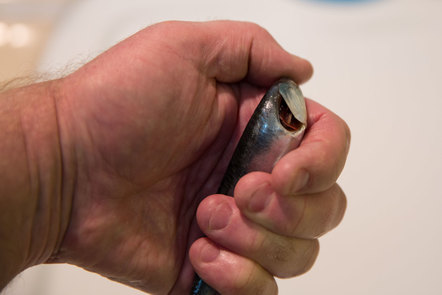
Collar Hooking - Another effective way to hook an anchovy is to hook the anchovy behind the gill plate or "collar hooking". Place the anchovy in your hand with the head toward your thumb. Use your thumb to slightly bend the nose of the anchovy to one side so as to expose the gills. Insert the point of the hook high through the flesh behind the gills. Take care not to insert the hook through the gills or too deeply into flesh. This method of hooking the anchovy is best used while fly lining (without weights). The anchovy will swim down and away and will stay more lively longer than jaw hooking. Typically, when retrieving a collar hooked anchovy, it is best just to tug the line sharply once before reeling back in to the boat so as to tear the hook away from the anchovy as collar hooked bait do not retrieve well.
The Set Up *
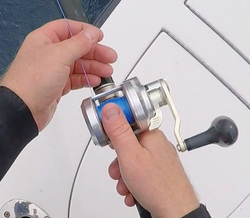
Once you have baited your hook with a large and lively Anchovy and put it in the water on the windward side of the boat. Pro Tip: If you don't know for sure from which direction the wind is blowing.... Put your bait in the water right off the stern. If your line starts angling to the right. Then the wind is from the port side of the boat. If your line starts angling toward the left, then the wind in from the Starboard side.
With your thumb lightly resting on the spool so as to prevent backlash, pull back on the lever drag until you are in complete free spool.
Keep your thumb lightly resting on the spool as you allow the Anchovy to swim away. Depending how tight your line is on your reel you may want to pull out line as the Anchovy swims. Let out a fair bit of line.
Sometimes the tuna are right at the boat, sometimes they are boat shy. I have hooked fish quite a distance from the boat. Windy days will mean faster drifts and more line going out. The key is to remain in contact with your Anchovy. You must feel the little bugger wiggling. If you don’t feel your anchovy or your line goes slack, there is something wrong and you should reel in and change bait. The more anglers you have the more you have to watch how much line you let out as tangles are a problem.
With your thumb lightly resting on the spool so as to prevent backlash, pull back on the lever drag until you are in complete free spool.
Keep your thumb lightly resting on the spool as you allow the Anchovy to swim away. Depending how tight your line is on your reel you may want to pull out line as the Anchovy swims. Let out a fair bit of line.
Sometimes the tuna are right at the boat, sometimes they are boat shy. I have hooked fish quite a distance from the boat. Windy days will mean faster drifts and more line going out. The key is to remain in contact with your Anchovy. You must feel the little bugger wiggling. If you don’t feel your anchovy or your line goes slack, there is something wrong and you should reel in and change bait. The more anglers you have the more you have to watch how much line you let out as tangles are a problem.
The Hook Up *
|
As a tuna comes within view of your bait, the Anchovy will begin getting nervous and swimming more vigorously to get away. When the tuna grabs your bait, you will see the line going out shift from first gear to overdrive as the tuna peels away at top speed with your bait in its mouth. The key at this point is to continue allowing line to go out while lightly resting your thumb over the outgoing line in order to prevent a backlash in your spool. Tuna can stop suddenly which will throw a backlash at you if you are not paying attention. As the line is screaming off your reel, every fiber in your body will be telling you to set the hook, but instead patiently count to six! It is rare to lose a fish because you waited too long, but many many fish are lost because anglers put the reel into gear too soon. After your six count, move the lever drag half of the way to the Strike position. This is critical! The tuna is swimming 20-30 miles per hour and unlike other mono-filament lines, there is zero stretch in the braid or the fluorocarbon. It has been my experience that the majority of fish are lost because the angler throws the lever drag into full strike while the fish is ripping out line. Breaking off a fish is doubly bad as that lost fish can send the school down with it. Don't be that guy! Once you have the fish’s attention and it begins to slow down, then and only then should you slide the drag up closer to the strike position. There is no need to swing the rod to set the hook on a tuna like you would on a salmon. Setting the hook on a tuna is a bad idea as it can cause break offs and is completely unnecessary. Tuna swallow the Anchovy and all you need to do is come up tight on them to ensure that they are hooked. The six count ensures the bait is fully swallowed and tightening the drag to half strike ensures the hook is set. Remember: "Never fear. Count to 10 before you put it in gear."
One final caution: Do not try to stop a tuna by clamping your thumb down on the spool! You will lose that fight and will have a nice blister or raw thumb as a souvenir. This is a mistake people rarely make twice. |
Holding the Rod while fighting a fish *
|
Fighting 6 to 10 twenty-five pound Albacore in a day can be hard work. Holding your rod correctly can make a big difference. A rod is essentially a lever. The fulcrum is the rod butt which should pivot on your belt line or on your rod belt. Like any lever, the farther away you apply upward force from the fulcrum the easier it is to move the load (fish). Do not attempt to fight a tuna with the rod butt in your arm pit. This is a recipe for pain and exhaustion.
|
|
Hold the rod in your non dominant hand above the reel. Holding the rod below the reel places your hand too close to the fulcrum (rod butt) making it much harder to lift. See the image to the left for correct hand placement. Holding the rod above the reel also allows the angler to more easily guide the line evenly back on to the reel. Use your thumb to push or pull the line occasionally while reeling to ensure the line does not bunch up in one spot on the spool.
|
|
Spinning reels - The lever principle holds true with spinning outfits as well. Hold the spinning rod with your right hand above the reel. Spinning reels hang below the rod. Do not attempt to reel a spinning reel upside down (reel above rod). Not only does it look really dumb, but the handle may unwind off the reel and then you will be stuck with a tuna fighting a rod in one hand and a reel handle in the other. Not advised!
|
Fighting The Fish *
|
Follow Your Fish! No Angles = No Tangles
Once you have your fished hooked, the real battle has now begun. Call out "Fresh One!" so that everyone knows you are hooked up. In many Bait Stop situations, you will have multiple anglers hooked up at the same time. It is critical that you follow your fish. If your tuna goes down around the stern so should you! These are not Trout. Tuna don’t take direction well. You will need to be mindful of other anglers and where their lines and fish may be. Communication is key. “Coming Down the Rail!”, “Over You”, “Under You”. It is a dance made all the more challenging when there are several dead Albacore lying on the bloody deck while the Ocean is tossing your boat about. Lift your rod to allow an angler fighting a fish to pass under your line or lower it and duck to allow an angler to pass over the top of you. Move your feet! Watch the first minute and a half of this video to get an idea of how to you need to move and work with your fellow anglers to prevent tangles. Keep a sense of humor. If you tangle with the line of another angler work quickly to unwrap each other. Braid is abrasive and can saw quickly through fluorocarbon. As your tuna approaches the boat, it will go into a death spiral. Work with the fish as it swims in circles. Pump and reel as it swims up and let it fight against the drag as it swims down. |
Gaffing a Tuna
|
Some people prefer to net tuna, but on the Shake N Bake we always gaff them.
You want to gaff your tuna in the head if at all possible. Gaffing a tuna in the body damages the meat. Wait for the tuna to come to the surface. Be patient! Don’t stab under water at it with the gaff. The tuna will be moving so you will need antipicapte where the fish will be by leading the fish like you would do if you were shooting a duck or a clay pigeon. The angler should not attempt to pull the tuna's head out of the water but keep the fish flat to the surface of the water. The angler should stay at the rail and fight the fish to ensure it is in the proper position to be gaffed. The Gaffer should come from under the fish and lift firmly. There is no need to swing hard or attempt to impale the fish. A sharp gaff should have no trouble penetrating the fish. While the tuna is on the gaff is an ideal time to de-hook, brain and bleed the fish. Holding the gaffed fish upright, a skilled gaffer can remove the hook and with a knife brain and bleed the fish in a matter of a few seconds. Once the tuna is gaffed, the angler should keep his rod tip pointed up in the air, and should provide the gaffer some slack line by pulling it off his reel. |
Bleeding and Braining
|
Once your tuna is on board, you should always brain the fish with a screw driver or knife. That calms them down and keeps them from flipping around the deck of the boat. Find the dimple on the top of the tuna's head. Insert the knife or screw driver at a downward angle through the dimple toward the middle of the fish. When the fish shudders and its mouth gapes open, you have hit the spot. The pacifier! A knife cut under the jaw is sufficient to bleed them.
|
Chilling Your Catch
|
Albacore Tuna are warm blooded. The Albacore that hits your deck will be 15 degrees warmer than the water in which they were just swimming. Chilling them quickly is important to maintaining a top quality table fare.
It is OK to leave tuna sitting on the deck for a little while (<15 minutes), but to ensure you get the highest quality fish meat, you will want to chill them as soon as you get a chance. Placing your freshly caught and bled fish into an ice and saltwater slurry is best as it helps the tuna bleed out more thoroughly and chills the fish quickly. Some anglers employ what is known as a "bleed bucket" to bleed out and chill the fish. After 30-60 minutes in the ice slurry, the fish can be moved to an insulated cooler, kill bag or fish hold and then covered with ice. |
Where to Fish
|
Tuna fisherman are not generally territorial about where they caught fish yesterday. It’s a big Ocean out there and sharing of GPS “numbers” is commonplace amongst sport fishermen unless, of course there’s a tournament. Check iFish.net (Salty Dogs) forum. Join a Tuna Club. Get to know your fellow Sport anglers on the radio. Learn how to read your GPS. Most tuna fishermen go by Lat/ Lon numbers. Tuna can be found in a variety of water temps and in both green and blue water. A good rule of thumb is to look for blue water between 60 and 64 degrees. Look for sharp temperature breaks (A full degree or two of change over a short stretch) in water temperature. Terrafin provides subscription based satellite shots of Ocean surface temperature as well as Chlorophyll. While trolling, keep a constant eye out for tuna breaking the surface (jumpers) chasing bait. Birds are your friends... Birds diving on the water or large rafts of birds sitting on the water are great indicators of tuna.
|
Bait Stop Etiquette
|
If you see a boat on a bait stop, give it a wide berth. A boat trolling too close can send a tuna school down and effectively shut down fishing for that boat. A good rule of thumb is stay at least 500 yards away from the stopped boat. Some boats will welcome you to join in on a bait stop, but you should never move in uninvited and if invited proceed based on how the inviting boat instructs you.
If you see us stopped that means we are on fish, so please do not troll by or around us. Hail us on channel 11 and when we plug the boat we will gladly keep the fish up and let you slide into the bait stop. |
Complementary Fishing Techniques
|
On the Shake N Bake we prefer to fish live bait because it is very productive and incredibly fun. There are times when other methods can and should be used in conjunction with live bait fishing. Tuna schools can come up and then go down. If while on a bait stop, you go without a bite for a while, it may mean that the school has gone down. Check your Fish Finder, you may see them at 50 feet or 90 feet. In such circumstances fishing with Iron jigs can be productive and useful in bringing the school back to the boat. I won’t go into the technique here, but Shimano Butterfly jigs in either pink or purple are generally the trick. Shimano Flat-fall jigs in black anchovy have also been very effective. Check Youtube for instructional videos on how best to fish iron jigs.
One advantage to Iron fishing is that they can be cast away from the boat and by doing so the angler fishing iron can fish on the opposite side of the boat (downwind side) as the anglers fishing live bait. Iron can also be cast at potential fish holding debris like a floating log or kelp paddy. Not all anglers are lucky enough to have live bait available at their port and therefore are forced to fish Iron exclusively. Swim baits can also be cast and can be an effective way to catch Tuna. Swim baits are best deployed via a spinning rod and reel. Cast the swim bait away from the boat or towards the structure. Allow the lead headed swim bait to sink for 30-60 seconds and then put the reel into gear and start reeling. Note: Tuna can and will hit both iron and swim baits while they are sinking. If you feel your line go slack, put the reel in gear and start cranking. |
Clothing *
As the saying goes… “Tuna clothes are forever” and truer words were never spoken. Don’t wear anything tuna fishing that you would want to wear again for doing any other activity beside tuna fishing.
Tuna blood and tuna slime have a pungent odor and once locked into the fabric of clothing, the odor and stains are extremely difficult to remove. Tuna fishing is also a very wet sport. Sea spray and constant deck washing make it impossible to stay dry and clean.
Tuna blood and tuna slime have a pungent odor and once locked into the fabric of clothing, the odor and stains are extremely difficult to remove. Tuna fishing is also a very wet sport. Sea spray and constant deck washing make it impossible to stay dry and clean.
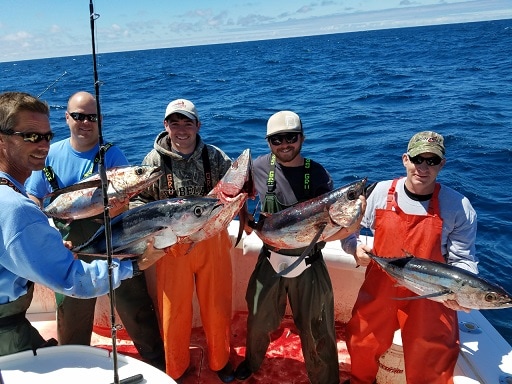
Most tuna anglers choose clothing that can be easily hosed down and hung out to dry at the end of the trip.
Bibs: Many anglers choose to wear rubberized bibs such as Grunden’s Herkules bibs. These bibs are rugged and can be easily hosed down to remove blood and slime. Other manufacturers make quality bibs as well including Gage and Helly Hansen. Be careful choosing bibs that are fabric based (Gortex) rather than rubberized. Fabric based bibs tend to catch and maintain fish blood and slime. No sense rendering a $200-$300 pair of bibs useless for anything other than tuna fishing. The main disadvantage of rubberized bibs is they don’t breathe well and so on warm days you tend to get hotter wearing them.
Bibs: Many anglers choose to wear rubberized bibs such as Grunden’s Herkules bibs. These bibs are rugged and can be easily hosed down to remove blood and slime. Other manufacturers make quality bibs as well including Gage and Helly Hansen. Be careful choosing bibs that are fabric based (Gortex) rather than rubberized. Fabric based bibs tend to catch and maintain fish blood and slime. No sense rendering a $200-$300 pair of bibs useless for anything other than tuna fishing. The main disadvantage of rubberized bibs is they don’t breathe well and so on warm days you tend to get hotter wearing them.
Rain Jacket/Coat: Most days tuna fishing you will not need a rain jacket, but if you fish enough there will be days that you will be glad you have one. Remember that no matter what the temperature you see in the forecast for shore, it will always be 10 degrees cooler on the water. Again look for a rain coat that can be easily hosed off. Don’t bring your best North Face jacket unless you plan to use it for only tuna fishing for the rest of its useful life.
Shirts: Albacore don’t care what color you wear, but after years of tuna fishing, the Shake N Bake crew tend to gravitate toward darker colored shirts as blood will stain a light colored shirt very easily and as mentioned earlier tuna blood stains are damn hard to remove.
Shirts: Albacore don’t care what color you wear, but after years of tuna fishing, the Shake N Bake crew tend to gravitate toward darker colored shirts as blood will stain a light colored shirt very easily and as mentioned earlier tuna blood stains are damn hard to remove.
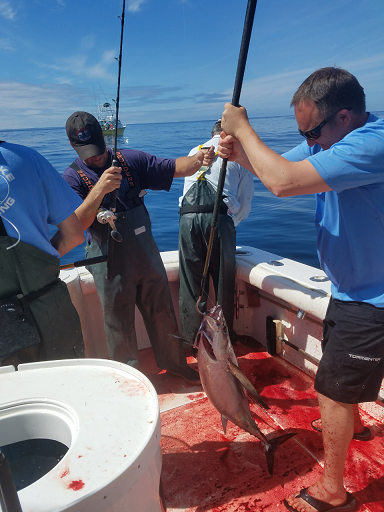
Going minimal: Some anglers choose to go in a different direction than the rubberized gear. Shorts and flip flops are not for everyone, but Captain Mike prefers this approach.
The advantages are: 1) he stays cool and 2) he is able to easily hose himself off at the end of the day. A word of caution for those considering this route: flip flops provide notoriously bad traction and expose your feet and toes to the potential dangers of hooks, knives, gaffs and other fisherman stepping on them in the heat of battle. Go this route at your own risk!
Rod Belts: Some anglers prefer to go without them, but unless you fish every day or your gut is made steel, rod belts are a great way to save yourself some pain in the days following your fishing trip. After fighting 6-10 albacore in a day, you will be glad you used one. Also, many trolling rods have notched gimballed butts. These gimbals can wear a hole in your rain gear not to mention your abdomen. Several manufacturers make rod belts. On the Shake N Bake we supply Anglers Choice rod belts to our clients for use during their charter trip.
Sunglasses: Wearing shades while fishing is not just about looking cool. Sunglasses are important for safety reasons as well. The sun reflects off the water and when you are surrounded by water as you are on a boat, it can be harmful to your eyes. Also, things fly through the air on a boat. Hooks, sinkers, rod tips etc., can all pose a danger to your eyes if you are not wearing eye protection. Finally, tuna fishing is a bloody sport. Sea spray and blood get splattered everywhere. I much prefer to wipe blood splatter off my sunglasses than out of my eyes. Several manufacturers make good sunglasses, but I highly recommend polarized glasses. Polarized glasses allow an angler to cut through the surface glare and see deeper and more clearly into the water. My personal preference is Maui Jim Sunglasses. They make excellent glasses and should you need to replace a lens, their service is second to none.
The advantages are: 1) he stays cool and 2) he is able to easily hose himself off at the end of the day. A word of caution for those considering this route: flip flops provide notoriously bad traction and expose your feet and toes to the potential dangers of hooks, knives, gaffs and other fisherman stepping on them in the heat of battle. Go this route at your own risk!
Rod Belts: Some anglers prefer to go without them, but unless you fish every day or your gut is made steel, rod belts are a great way to save yourself some pain in the days following your fishing trip. After fighting 6-10 albacore in a day, you will be glad you used one. Also, many trolling rods have notched gimballed butts. These gimbals can wear a hole in your rain gear not to mention your abdomen. Several manufacturers make rod belts. On the Shake N Bake we supply Anglers Choice rod belts to our clients for use during their charter trip.
Sunglasses: Wearing shades while fishing is not just about looking cool. Sunglasses are important for safety reasons as well. The sun reflects off the water and when you are surrounded by water as you are on a boat, it can be harmful to your eyes. Also, things fly through the air on a boat. Hooks, sinkers, rod tips etc., can all pose a danger to your eyes if you are not wearing eye protection. Finally, tuna fishing is a bloody sport. Sea spray and blood get splattered everywhere. I much prefer to wipe blood splatter off my sunglasses than out of my eyes. Several manufacturers make good sunglasses, but I highly recommend polarized glasses. Polarized glasses allow an angler to cut through the surface glare and see deeper and more clearly into the water. My personal preference is Maui Jim Sunglasses. They make excellent glasses and should you need to replace a lens, their service is second to none.
Weather, Tides and Moon Phases
Ideal conditions for live bait fishing is 5-7kts of wind with 1 ft of wind wave. Wind over 15kts makes live bait fishing challenging because your boat will drift quickly and will make it less likely that you will be able to keep the school under the boat.
Here are the websites I check before going out of the Columbia River.
Here are the websites I check before going out of the Columbia River.
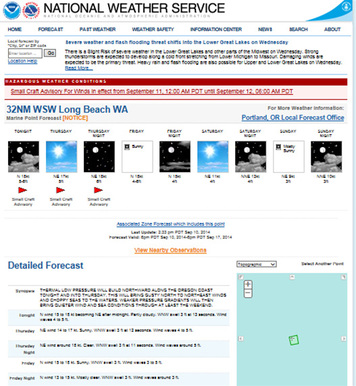
Spot forecast for 32 Nautical Miles out
National Weather Service
The National Oceanic and Atmospheric Administration (NOAA) forecast is not always accurate, but their forecast should always be considered before venturing out on the Ocean.
National Weather Service
The National Oceanic and Atmospheric Administration (NOAA) forecast is not always accurate, but their forecast should always be considered before venturing out on the Ocean.
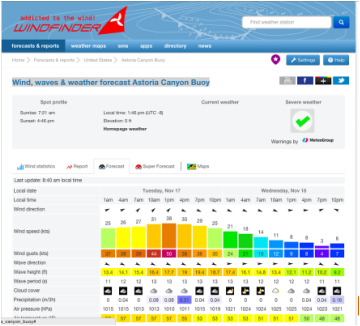
Wind, waves & weather forecast Astoria Canyon Buoy
A good long range guide to what kind of weather to expect and the way conditions are trending. This site also forecasts much further out than NOAA. They even have an app if you are so inclined.
A good long range guide to what kind of weather to expect and the way conditions are trending. This site also forecasts much further out than NOAA. They even have an app if you are so inclined.
|
Buoy 29 Forecast
Buoy 29 is 20 Nautical Miles West of the Columbia River Mouth. Check this one out 48 hours to 24 hours before you leave the dock. This will give you a good indication if the weather on the day you plan to fish is forecasted to change quickly. Note: NOAA can be “off” by 12 to 24 hours in their forecast so if the window for good weather looks narrow, be cautious. |
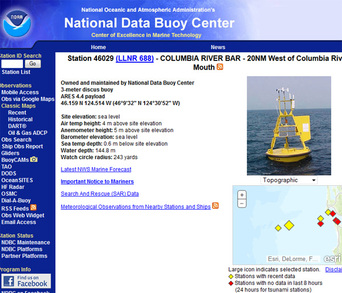
Buoy 29 Conditions
(20 Nautical Miles West of Columbia Mouth)
Check this one before you leave the dock on the morning you plan to go fishing. Buoy 29 provides a good proxy for what the conditions will be like when you get out there. Also this site provides water temperature readings which are helpful.
Note: Rough weather can occasionally knock the wind meter on this buoy out of commission. And in the past Buoy 29 has been shifted from its charted position.
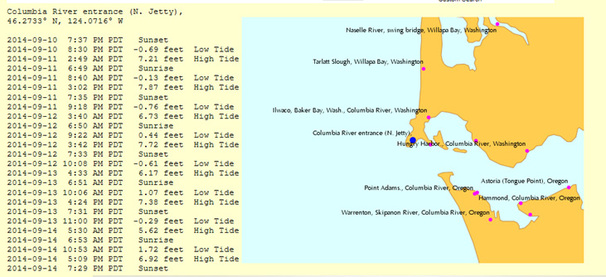
Tides at Columbia River Mouth
Know the tides!
I don’t care how big you boat is, you want to avoid crossing the bar on in the middle of the ebb tide (4-5 hours after the high tide). Leave earlier or leave later, but the Columbia River Bar is called the Graveyard of the Pacific for good reason. High tide is generally the best time to cross, but avoiding the middle of the Ebb or max Ebb is paramount.
Know the tides!
I don’t care how big you boat is, you want to avoid crossing the bar on in the middle of the ebb tide (4-5 hours after the high tide). Leave earlier or leave later, but the Columbia River Bar is called the Graveyard of the Pacific for good reason. High tide is generally the best time to cross, but avoiding the middle of the Ebb or max Ebb is paramount.
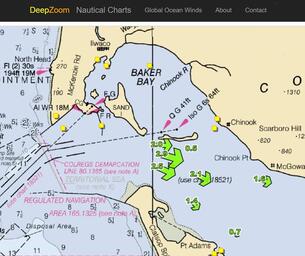
Deep Zoom
Deep Zoom is a fantastic tool for understanding max Ebb, its timing and its impact.
The gravitational pull of the sun and the moon drives tidal changes. On full moons and new moons, the delta between high tide and low tide are the greatest. This means more water passing through the shallow and relatively narrow mouth of the Columbia River. On big tide swings (A difference of 7 feet or more between high and low tides) the strength of the current can be tremendous. Currents of over 6 knots are not uncommon in the middle of the Columbia River channel during max ebb. The Deep Zoom website is a free interactive tool for visualizing how strong the current will be at certain times of the day. Use this tool to help plan your departure and your return. Big yellow arrows means a strong ebb = Not the time to cross the bar.
Deep Zoom is a fantastic tool for understanding max Ebb, its timing and its impact.
The gravitational pull of the sun and the moon drives tidal changes. On full moons and new moons, the delta between high tide and low tide are the greatest. This means more water passing through the shallow and relatively narrow mouth of the Columbia River. On big tide swings (A difference of 7 feet or more between high and low tides) the strength of the current can be tremendous. Currents of over 6 knots are not uncommon in the middle of the Columbia River channel during max ebb. The Deep Zoom website is a free interactive tool for visualizing how strong the current will be at certain times of the day. Use this tool to help plan your departure and your return. Big yellow arrows means a strong ebb = Not the time to cross the bar.
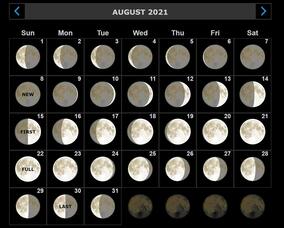
Moon Phases
Fisherman have their theories on Moon Phases and its impact on tuna fishing. All things being equal, most would generally prefer not to fish on a full moon. The theory is that tuna feed at night during a full moon because they can see the bait fish better and therefore are less likely to eat during the day. Having said that, we have had some very productive days fishing on or around a full moon. In the Pacific Northwest, cloud cover can and often does obscure the moon at night rendering it less impactful. As mentioned previously, full moons and new moons generally drive bigger tide swings so understanding the moon phase is useful in planning your trip. One of the best calendars out there for understanding the moon phases in a visual way is Moon Giant.
Fisherman have their theories on Moon Phases and its impact on tuna fishing. All things being equal, most would generally prefer not to fish on a full moon. The theory is that tuna feed at night during a full moon because they can see the bait fish better and therefore are less likely to eat during the day. Having said that, we have had some very productive days fishing on or around a full moon. In the Pacific Northwest, cloud cover can and often does obscure the moon at night rendering it less impactful. As mentioned previously, full moons and new moons generally drive bigger tide swings so understanding the moon phase is useful in planning your trip. One of the best calendars out there for understanding the moon phases in a visual way is Moon Giant.
Words to Remember
- Wind in your face, you're in the right place!
- Never Fear. Count to six before you put it in gear!
- Follow your fish! No angles... No tangles!
- The most important fish is the next fish!
